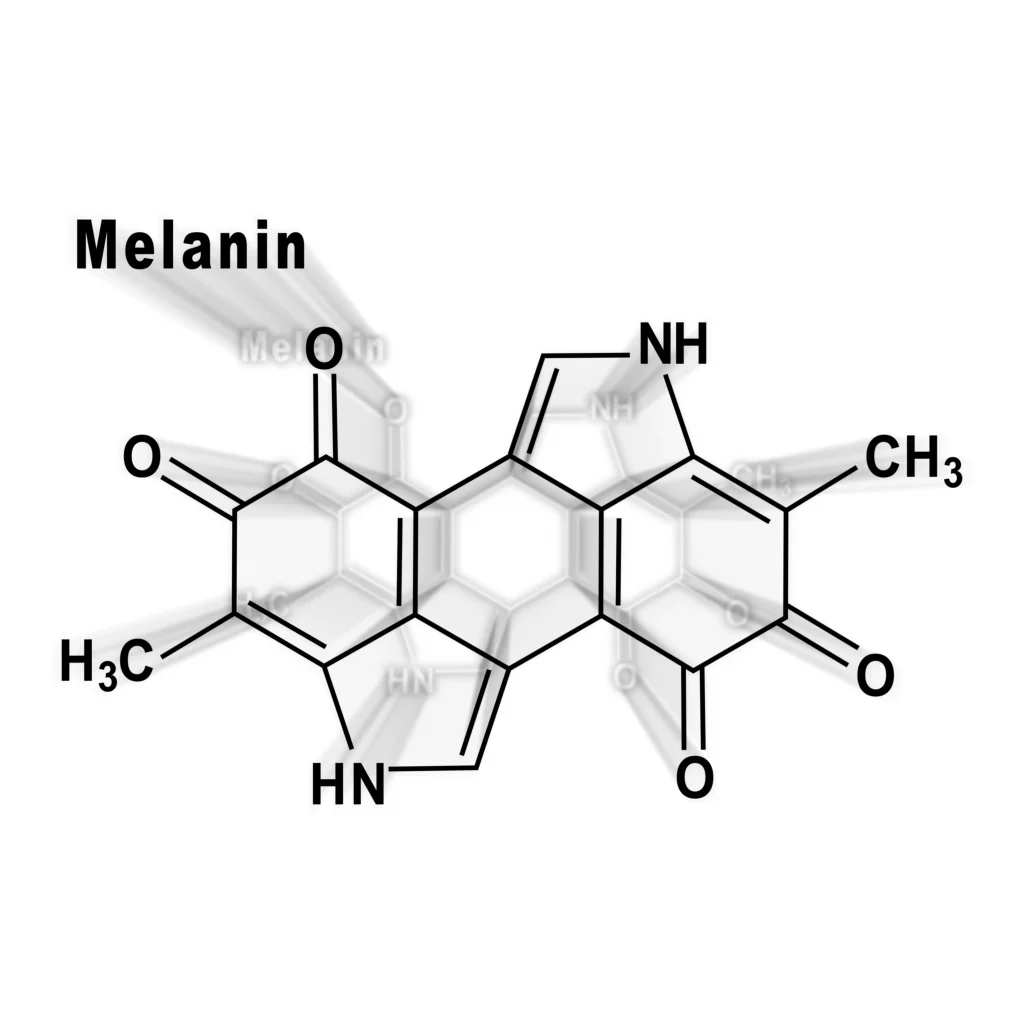
3 Unique Locations of Neuromelanin - Melanin is a natural pigment that gives color to our skin, hair, and eyes. It is produced by special cells in the skin called melanocytes. Melanin helps protect us from the harmful effects of sunlight, including ultraviolet (UV) rays.
People with more melanin in their skin have excellent protection from the sun’s UV rays. However, everyone needs to be careful in the sun and take steps to protect themselves from too much exposure, regardless of their skin color.
Too much sun exposure can lead to skin damage, premature aging, and skin cancer. Therefore, everyone needs to use sunscreen, wear protective clothing, and limit time in the sun, especially when UV rays are strongest in the middle of the day.
There are two types of melanin: eumelanin and pheomelanin.
Eumelanin is the type of melanin that gives color to our skin, hair, and eyes. It ranges in color from black to brown. Pheomelanin is a red or yellow pigment in certain skin types and hair. The amount of each type of melanin in our skin determines our natural skin color.
Most people have more eumelanin than pheomelanin which gives them darker skin colors, such as brown, black, or tan. People with less eumelanin have lighter skin colors, such as white or pink.
A mutation in the MC1R gene causes red hair. This gene controls the production of pheomelanin. People with this mutation have less eumelanin and more pheomelanin, which gives their hair a red or ginger color.
Melanin is produced by melanocytes found in the bottom layer of the skin (the dermis). Melanocytes produce melanin in response to UV light which helps protect the skin from damage.
Melanocytes are found in more significant numbers in some people than others, which explains why some people have darker skin than others. It also explains why people who spend more time in the sun tend to have darker skin.
The amount of melanin in our skin can also change over time. For example, pregnancy, certain hormones, and age can all cause changes in skin color. These changes are usually temporary and will go back to normal after some time.
Neuromelanin is a type of melanin found in the brain and is thought to play a role in protecting neurons from damage. It has higher levels in some brain areas, such as the substantia nigra.
The substantia nigra is a region of the brain that is responsible for movement. Neurons in this region are particularly susceptible to damage from oxidative stress. Oxidative stress occurs when there is an imbalance between the production of free radicals and the body’s ability to protect itself from them.

Free radicals are atoms or molecules with an unpaired electron, making them unstable and reactive. They can damage cells, proteins, and DNA.
The body has mechanisms to protect itself from free radicals, but these mechanisms can become overwhelmed. This overexertion can happen when too much free radical production or the body’s antioxidant defenses are not working correctly.
Oxidative stress has been linked to several diseases, including Parkinson’s disease. Parkinson’s disease is a condition that affects movement caused by the death of neurons in the substantia nigra. Neurons in this region contain high levels of neuromelanin.
It is thought that oxidative stress may contribute to the death of these neurons because neuromelanin can act as a scavenger of free radicals, which means that it can help to protect neurons from damage.
Neuromelanin is also found in other brain regions, such as the cerebral cortex. The cerebral cortex is responsible for higher cognitive functions, such as decision-making and planning. It has been linked to certain psychiatric disorders, such as schizophrenia. Schizophrenia is a mental disorder that affects a person’s ability to think, make decisions, and interact with others.
It is thought that neuromelanin may play a role in the development of this disorder because it can affect neurotransmission. Neurotransmission is the process by which nerve cells communicate with each other.
This type of melanin is also found in the eyes. It is thought to play a role in protecting the eyes from damage.